Pennsylvania’s skies are home to a diverse range of bird species, 12 of which are notably large and imposing. These avian giants aren’t just big in size; they’re packed with personality and unique characteristics that set them apart from the rest.
From the majestic bald eagle to the elusive great blue heron, these creatures command attention wherever they go.
Among these feathered behemoths, you’ll find both year-round residents and seasonal visitors. They’ve adapted well to Pennsylvania’s varying landscapes – forests, wetlands, open fields, and urban areas serve as perfect habitats for these birds.
Observing them in their natural environment is a rewarding experience for wildlife enthusiasts.
A word of caution though – while it’s exciting to spot these birds, remember that they are protected by law. Disturbing them or their nests could lead to hefty penalties. So marvel at their beauty from a distance and respect their space as much as possible.
1. Accipitridae
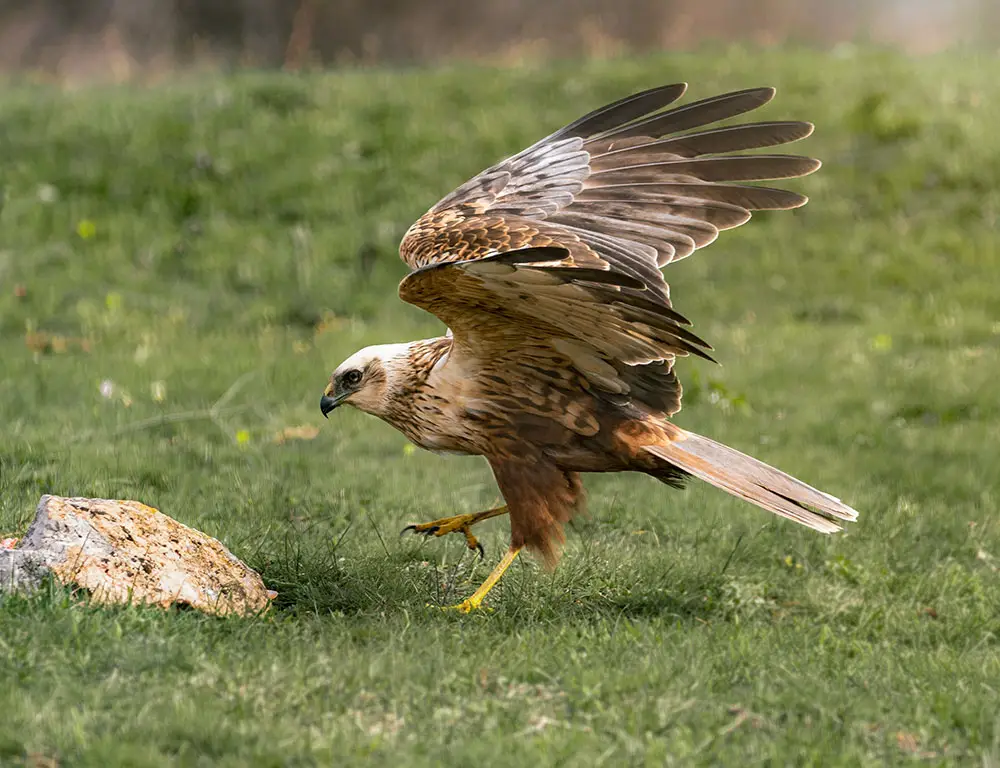
The Accipitridae family, known for its size and hunting prowess, forms an essential part of Pennsylvania’s avian biodiversity.
This family comprises 14 diverse subfamilies including the Buteonine hawks and Aquilines (eagles), recognized for their broad wingspans, sharp talons, hooked beaks and role as apex predators.
These birds are not only of interest to birdwatchers but also conservationists, ecologists, and farmers due to their crucial role in controlling populations of rodents and other small animals thus maintaining balanced ecosystems.
Their grandeur makes them an enchanting sight whether they’re soaring across the sky or demonstrating their hunting skills.
2. Canada Goose
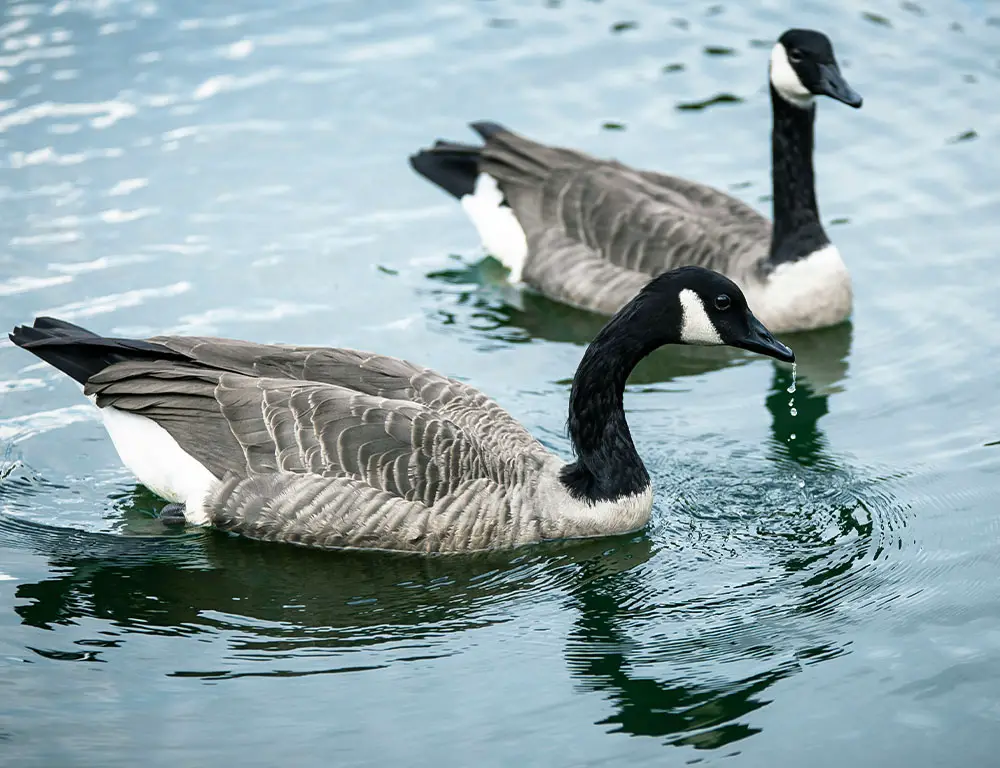
Often seen gracefully gliding across your local pond, the Canada goose is a majestic sight to behold. They’re big birds with an undeniable presence, known for their black head and neck, white cheeks, and brown body. It’s difficult not to notice them!
Native to arctic and temperate regions of North America, these geese have made Pennsylvania their home too. In fact, they’ve become so accustomed to human interaction that they often build nests in urban settings like parks or golf courses.
But don’t let their serene demeanor fool you; when feeling threatened during nesting periods, these geese can be quite protective.
Interestingly enough, although primarily North American residents, the Canada goose occasionally finds itself on a European vacation! Migration can take them across the Atlantic to northern Europe – no small feat for a bird!
One thing’s for sure: whether it’s in Pennsylvania or Paris, the Canada goose brings wildlife wonderment wherever it goes!
3. Sharp-shinned Hawk
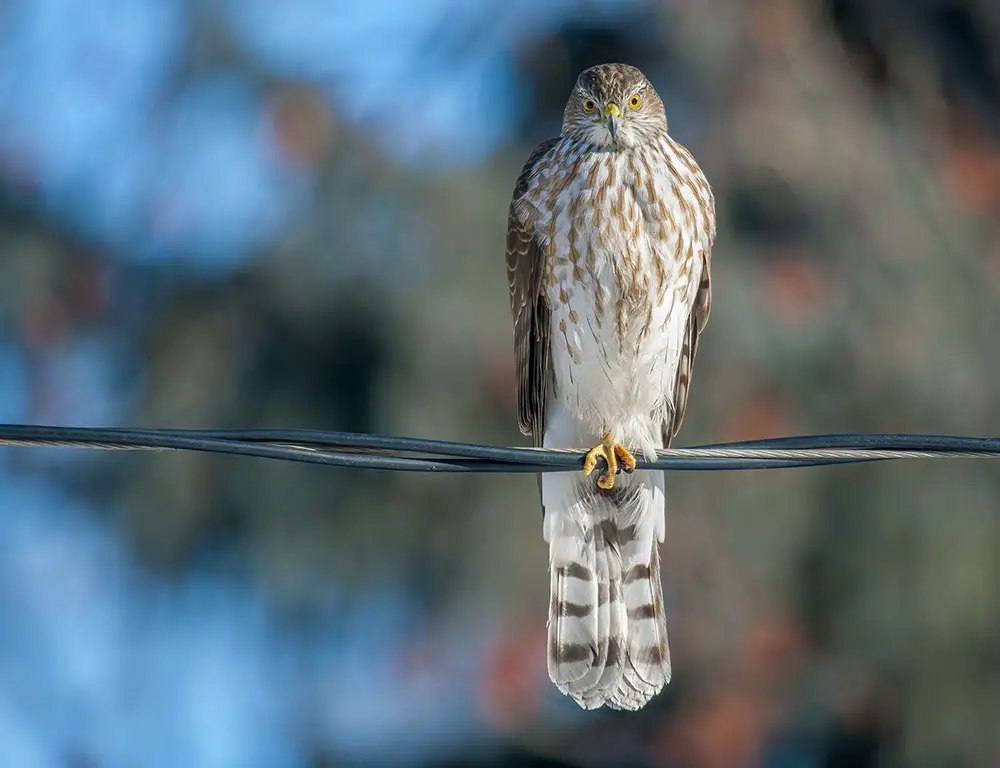
Considered a small bird of prey, the sharp-shinned hawk – sometimes known as a “sharpie” – holds its own unique place in the avian world. Even though it’s classified as small, it still manages to outsize some of its Neotropical counterparts like the tiny hawk.
Sharp-shinned hawks (Accipiter striatus) are particularly notable for their distinctive physical characteristics.
Displaying short broad wings and long square-ended tails adorned with dark bands, they’re not easily mistaken. They’ve also got what could be described as a ‘dark cap’, adding another layer to their unique appearance.
Males of this species have an interesting distinction: they’re known to be the smallest hawks in both the United States and Canada. However, don’t let their size fool you – these birds are fierce predators with an agility that enables them to navigate dense forests while hunting.
In Pennsylvania specifically, these agile hunters can often be seen darting through woodlands in pursuit of other birds which make up a significant portion of their diet.
It’s not uncommon for bird enthusiasts and nature photographers alike to spend hours hoping for a glimpse or capture of these fascinating creatures.
4. Cooper’s Hawk

Pennsylvania’s skies are home to the nimble and swift, Cooper’s hawk. A medium-sized raptor native to North America, it can be found anywhere from southern Canada all the way down to Mexico. Its scientific name is Accipiter cooperii and falls under the higher classification of Accipiters.
The size of this bird of prey can range between 14 – 20 inches in length with an average adult mass around 1.2 lbs. Even with its relatively modest size, don’t underestimate its hunting prowess!
The diet primarily consists of other creatures like squirrels, common grackles, rock doves, and band-tailed pigeons.
|
Size |
Length: 14-20 inches |
|---|---|
|
Weight |
Adult Mass: ~1.2 lbs |
Despite urbanization and habitat changes over time, the Cooper’s hawk has shown a tenacity for survival as well as adaptation. It’s currently listed as ‘Least Concern’ in terms of conservation status due to a steady increase in population numbers.
This bird species showcases remarkable resilience which contributes significantly to its thriving presence across North America including Pennsylvania where their robust presence adds diversity to the state’s large bird population.
From an ecological standpoint, their predatory nature plays a vital role in controlling populations of smaller birds and mammals thus maintaining balance within local ecosystems.
-
Scientific name: Accipiter cooperii
-
Conservation Status: Least Concern (Population increasing)
-
Diet includes squirrel, common grackle, rock dove, band-tailed pigeon
5. Black Vulture
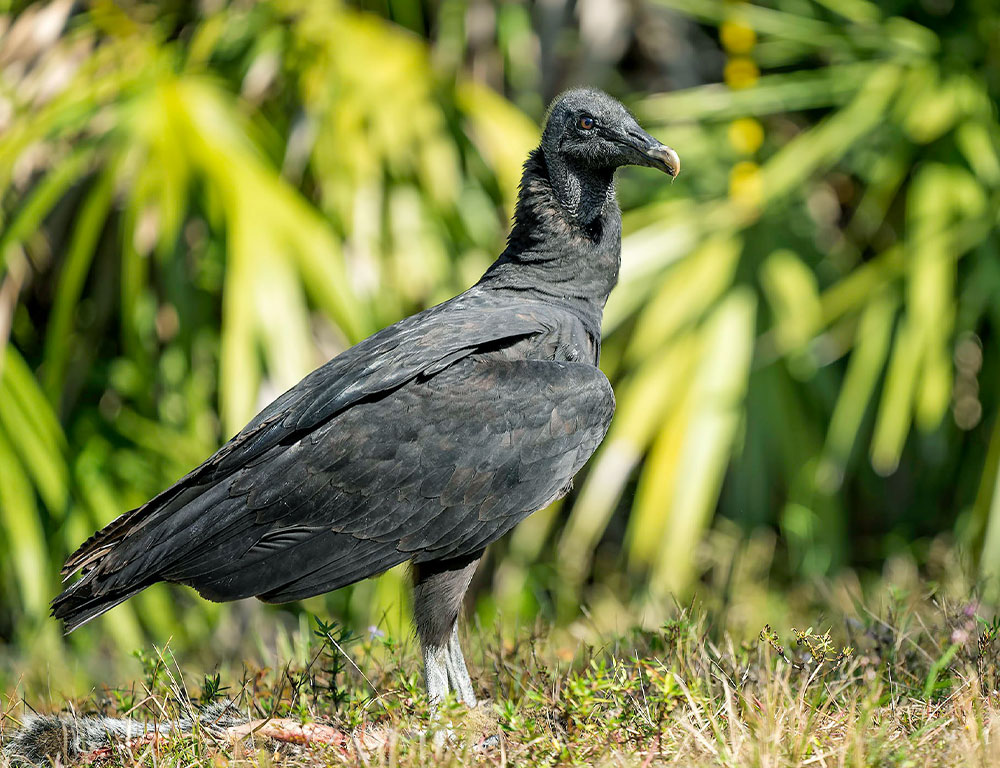
The black vulture, sporting a range that spans from southeastern U.S. to as far south as Peru, Central Chile and Uruguay in South America, is an intriguing specimen of the New World vulture family.
Known by other names such as the American black vulture, Mexican vulture, zopilote, urubu or gallinazo, this bird presents quite an interesting study.
A bird of moderate size when compared with some others in the avian world, it can measure anywhere between 1.8 to 2.4 feet in length. Their weight fluctuates within a range of 2.6 to 4.3 lbs – these figures are particularly applicable to those found roaming the tropical lowlands.
In terms of reproduction capabilities, they’re known for their modest clutch size numbering between one to three offspring at a time.
Despite potential threats faced in their varying habitats, they’ve proven resilient over time – a fact reflected in their conservation status being listed as ‘Least Concern’ by Encyclopedia of Life.
Living up to ten years out there in the wild isn’t easy but this species has managed that feat quite efficiently on average! The resilience and adaptability displayed by these birds have helped them maintain and even increase their population numbers across various regions.
Their scientific classification places them under Coragyps at higher levels while they hold rank as a species within it.
|
Feature |
Details |
|---|---|
|
Length |
1.8 – 2.4 ft |
|
Mass |
2.6 – 4.3 lbs (Tropical lowlands population) |
|
Lifespan |
Up to10 years (In the wild) |
|
Clutch Size |
Between 1-3 |
|
Conservation Status |
Least Concern (Population increasing) |
6. Great Blue Heron
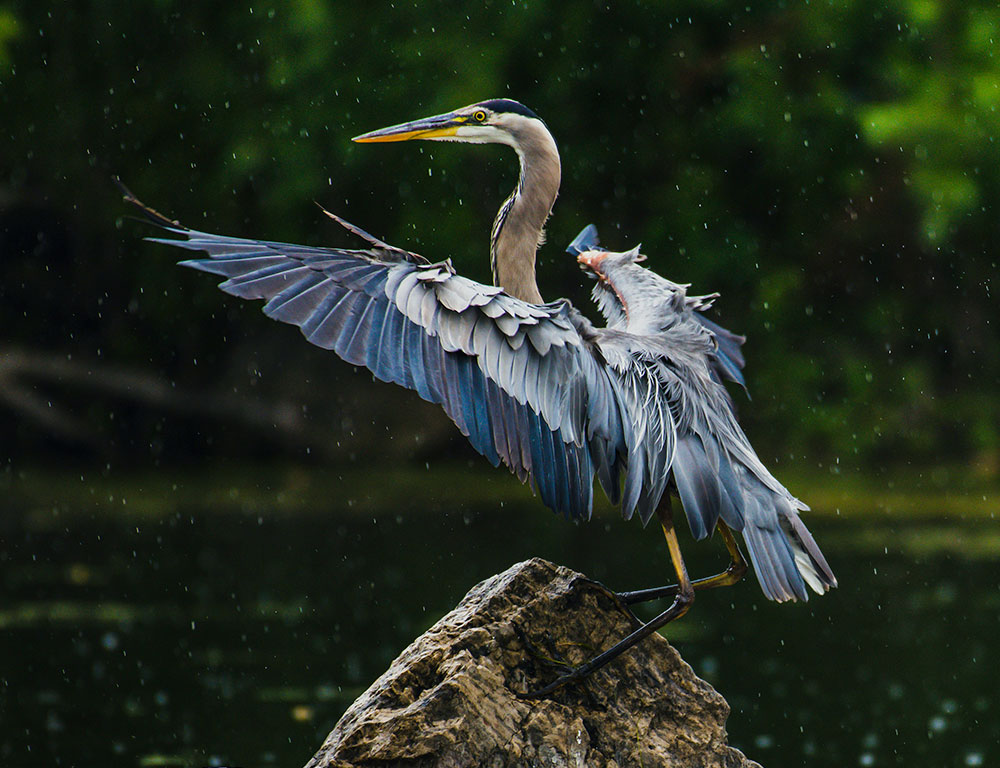
The Great Blue Heron, known scientifically as Ardea herodias, is a remarkable bird that’s common near the shores of open water and in wetlands spread across most of North and Central America.
It’s also found in far northwestern South America, the Caribbean, and even as far off as the Galápagos Islands. This majestic creature stands tall among other birds with its length ranging between 3.2 to 4.5 feet.
Let’s not forget about weight; the Great Blue Heron tips the scales at around 4.6 to 5.5 pounds. These numbers may seem impressive but it’s this large stature that enables them to wade through water bodies effortlessly while hunting for their next meal.
Here are some quick stats about the Great Blue Heron:
|
Feature |
Details |
|---|---|
|
Conservation status |
Least Concern (Population increasing) |
|
Higher classification |
Great herons |
|
Length |
3.2 – 4.5 ft |
|
Mass |
4.6 – 5.5 lbs |
|
Rank |
Species |
They’re part of a larger family of birds known as Ardeidae which includes various types of herons and egrets, suggesting an intricate network of evolution that has led these species to adapt perfectly to their habitats.
While they might appear formidable due to their size, they are currently listed under “Least Concern” on conservation status rankings because their population is actually increasing!
That said, it’s still crucial for us as responsible inhabitants of planet Earth to ensure we maintain respectful interactions with these creatures and their environments.
One thing’s for sure: Pennsylvania’s landscapes wouldn’t be quite the same without the commanding presence of these magnificent birds striding through its waters.
7. Great Egret
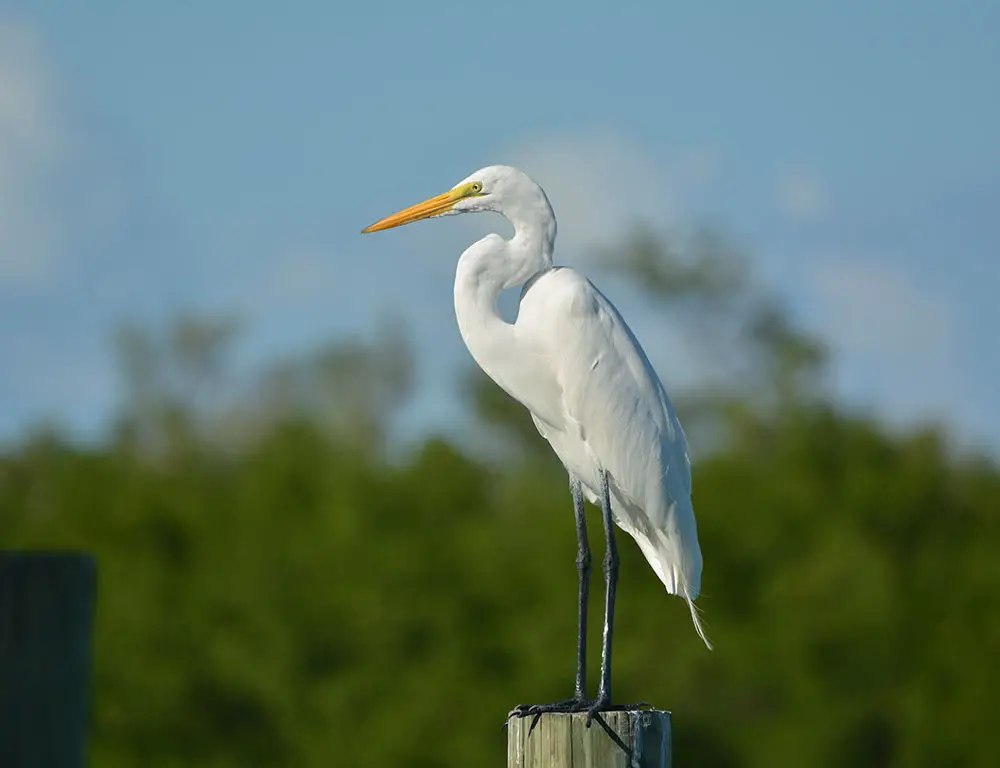
Standing tall amongst the avifauna of Pennsylvania, the great egret, also known as the ‘common egret’, ‘large egret’ or ‘great white heron’, is a sight to behold. This large bird species with its elegant white plumage, long neck and legs makes it easily recognizable.
The great egret isn’t confined to Pennsylvania or even North America – it’s widely distributed around the globe. Its four subspecies are found in a diverse range of habitats spanning Asia, Africa, Americas and southern Europe. In recent times, this adaptable bird has been expanding its territory further north into Europe.
Here’s some key data about the great egret:
|
Aspect |
Data |
|---|---|
|
Scientific Name |
Ardea alba |
|
Length (Adult) |
2.6 – 3.4 ft |
|
Mass (Adult) |
1.5 – 3.3 lbs |
|
Wingspan (Adult) |
4.3 – 5.6 ft |
Despite being classified as a larger bird species, they’re surprisingly light-weight for their size – adults typically weigh between only 1.5 to 3.3 pounds!
They have an impressive wingspan too; stretching anywhere from approximately four and a half feet to nearly six feet wide when fully extended!
Another interesting fact about these birds is that they’re categorized under the higher classification of “Great Herons”. This grouping further exemplifies their significant stature within avian communities.
In terms of conservation status, there’s some good news: according to Encyclopedia of Life, the great egret falls under ‘Least Concern’.
However, that doesn’t mean we can become complacent in our efforts towards preserving and protecting these majestic birds’ habitats and populations.
Observing a great egret in its natural habitat is truly an awe-inspiring experience; whether it’s gracefully stalking fish in shallow water bodies or soaring skyward with its vast wings spread wide.
It’s one of the many bird-watching treasures that Pennsylvania holds in its natural bounty.
8. American White Pelican
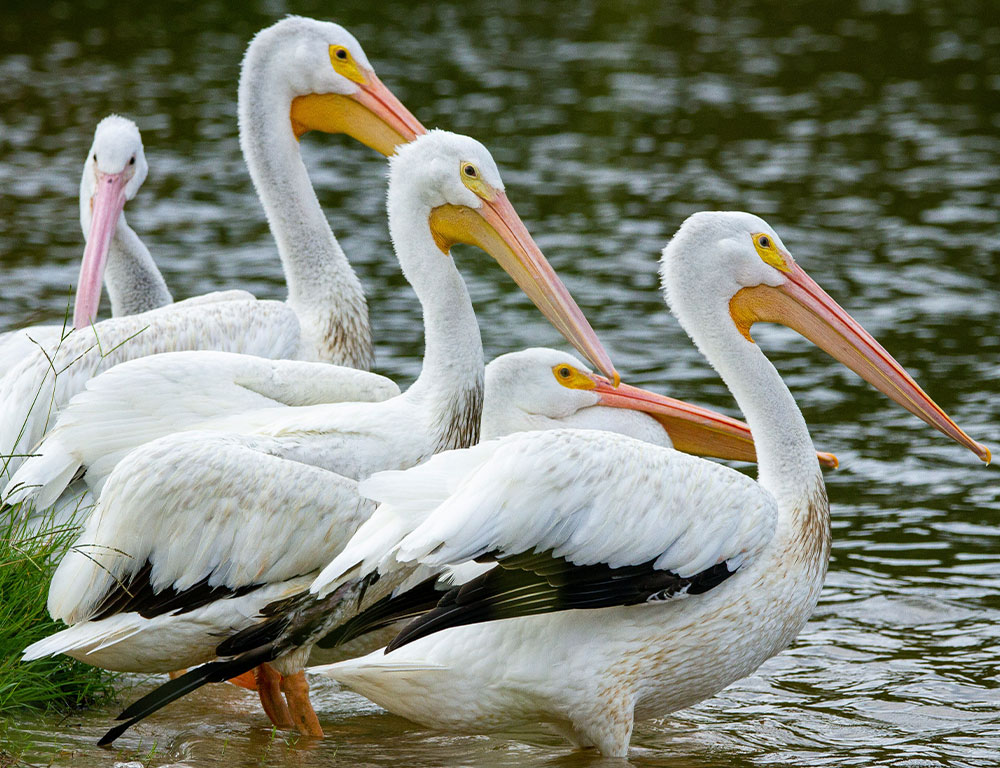
The skies of Pennsylvania are often graced by the majestic presence of the American white pelican. Classified under the higher order Pelecaniformes, this large aquatic soaring bird is truly a sight to behold.
It’s known for its impressive size, with adults typically measuring between 4.2 and 5.4 feet in length and weighing around 14 pounds.
An interesting aspect about the American white pelican is its migratory behavior. These birds breed in interior North America but they’re not ones to brave the cold winters up north. Instead, they migrate southwards or towards the coasts during winter, some traveling as far as Costa Rica!
|
|
|
|---|---|
|
Conservation status: |
Least Concern (Population increasing) |
|
Higher classification: |
Pelican |
|
Length: |
4.2 – 5.4 ft |
|
Mass: |
14 lbs (Adult) |
But that’s not all there is to these magnificent creatures! The scientific name for this species is Pelecanus erythrorhynchos and it falls under the class Aves.
-
The American white pelican has an expansive wingspan which aids in their long-distance travel.
-
They have a unique feeding style — while some birds dive for fish, these pelicans prefer scooping them up with their long bills.
-
Don’t let their heavy stature fool you; these birds are excellent fliers capable of soaring at great altitudes!
9. Gyrfalcon
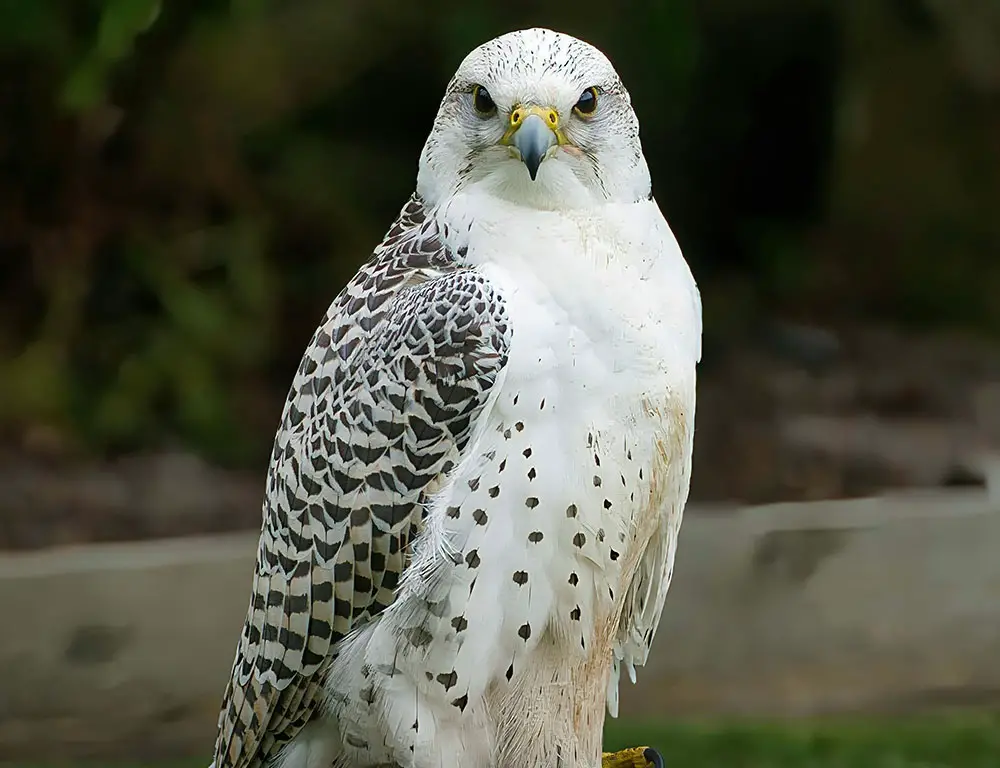
Roaming the Arctic coasts, tundras, and islands of northern North America and the Eurosiberian region, you’ll find the gyrfalcon – a bird that’s not only large but also majestic.
Known as Falco rusticolus in scientific circles, it’s the biggest among its falcon siblings. The term ‘gyr’ is often used as an abbreviation for this remarkable species.
Being part of the Hierofalcon classification, it’s no surprise that the gyrfalcon carries some impressive stats with it. Weighing in at around 3.2 lbs, these birds are members of an exclusive club within Falconidae family.
But don’t let their size fool you into thinking they’re slow movers. On the contrary, gyrfalcons can reach speeds between 50-68 mph according to data from bbcearth.com.
Their conservation status might pique your interest too—it’s currently listed as ‘Least Concern’. That means their population is stable for now—an encouraging sign for bird enthusiasts and environmentalists alike.
|
Feature |
Details |
|---|---|
|
Scientific Name |
Falco rusticolus |
|
Higher Classification |
Hierofalcon |
|
Mass |
3.2 lbs |
|
Speed |
50-68 mph |
|
Family |
Falconidae |
It’d be remiss not to mention where these creatures make their homes—typically on the Arctic coasts and tundra regions. It seems they have a preference for colder climates—a trait they share with many other members of their family.
There’s something undeniably captivating about the gyrfalcon—the largest falcon species on our planet today. Whether it’s their agility despite their size or their adaptability to harsh climates, these feathered predators certainly deserve our attention—and respect.
10. Wood Stork
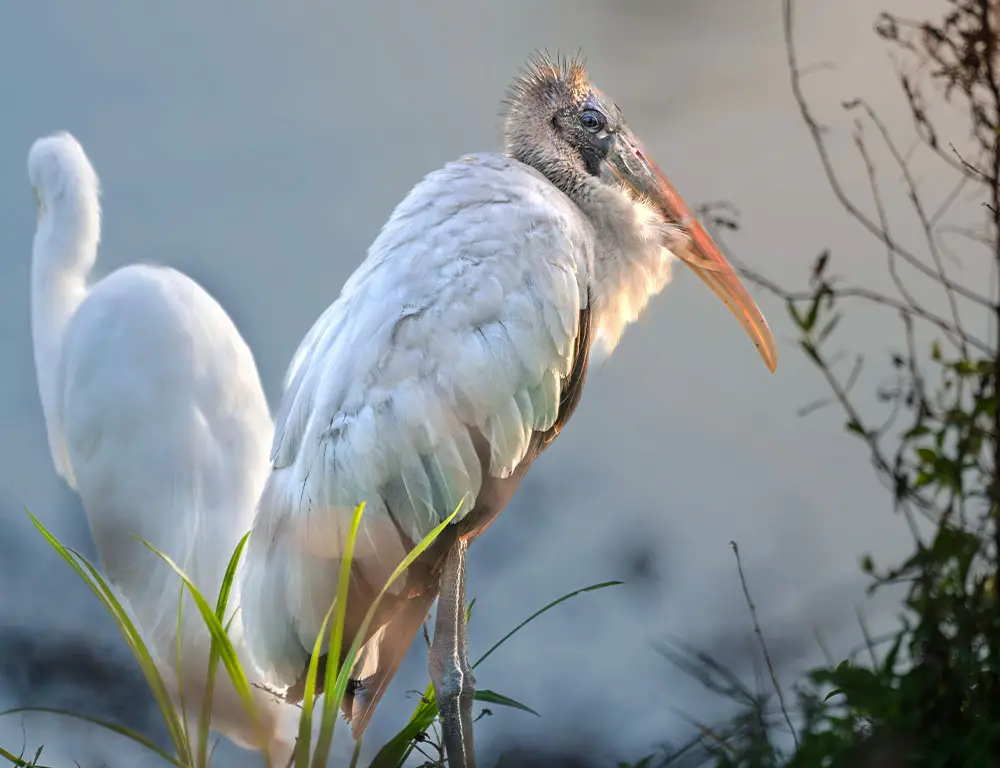
Let’s delve into the world of the Wood Stork, a remarkable bird and one of Pennsylvania’s large feathered residents. Known scientifically as Mycteria americana, this American wading bird belongs to the family Ciconiidae. Interestingly enough, it’s the only member of its family that breeds in North America.
Previously referred to as the “wood ibis”, it is important to note that despite its former name, it isn’t actually an ibis. The Wood Stork can be found in subtropical and tropical habitats throughout the Americas and extends its reach even into the Caribbean.
In terms of physical characteristics, these birds are quite impressive. Their length ranges from 2.7 – 3.8 ft., making them one of the larger bird species in Pennsylvania. Additionally, they tip the scales at around 5.5 lbs.
|
Physical Characteristic |
Measurement |
|---|---|
|
Length |
2.7 – 3.8 ft |
|
Mass |
5.5 lbs |
Although currently listed with a conservation status of ‘Least Concern’ by Encyclopedia of Life, it’s crucial to mention that their population is on a decreasing trend.
Despite being classified under ‘Least Concern’, continuous efforts are still necessary to maintain their population and habitat within Pennsylvania and beyond.
The Wood Stork adds diversity and beauty to our ecosystem – indeed a unique specimen among North America’s avian life.
11. American Flamingo
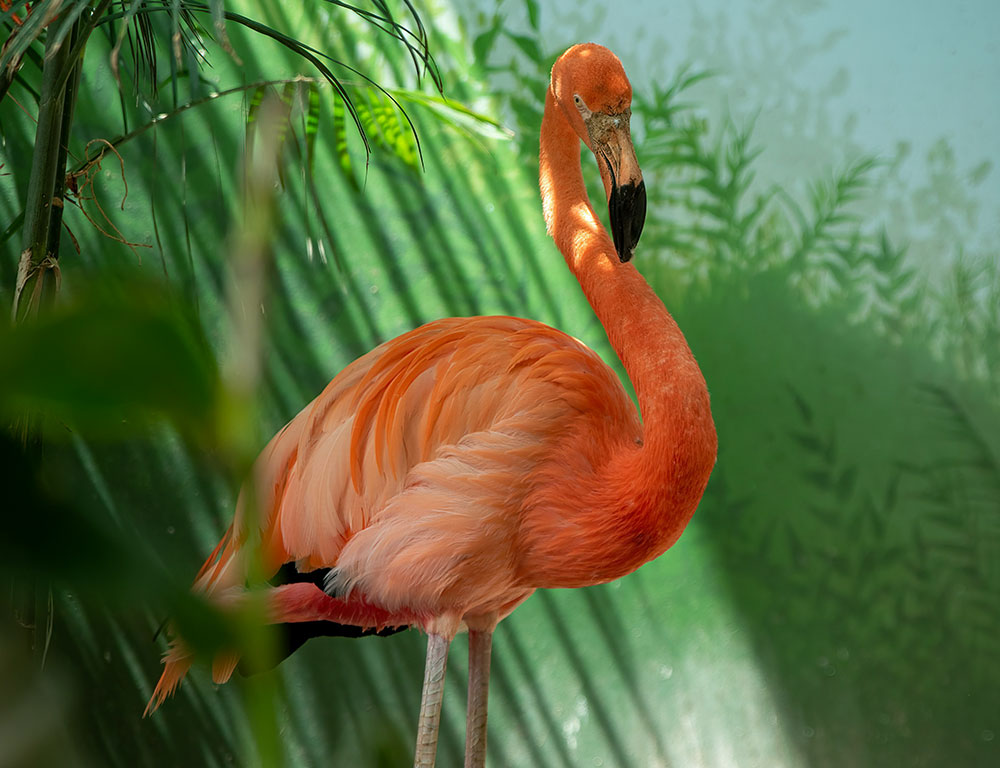
In the diverse avifauna of Pennsylvania, you’ll find an unusual bird that’s a sight to behold – the American flamingo. Also known by its scientific name, Phoenicopterus ruber, this large flamingo species boasts origins tracing back to the West Indies, northern South America, and the Yucatan Peninsula.
It’s a member of the Aves class and belongs to the order Phoenicopteriformes. The American flamingo falls under Greater Flamingos’ higher classification.
Notably, it’s one of those species that offers ornithologists and bird enthusiasts alike an array of exciting characteristics to study. The unique coloration – typically ranging from pink to bright red – is a result of their diet rich in carotenoid proteins.
Weight-wise they clock in between 4-8 pounds according to myfwc.com data. This makes them quite hefty compared to other birds found in Pennsylvania.
|
Statistic |
Detail |
|---|---|
|
Higher Classification |
Greater Flamingos |
|
Rank |
Species |
|
Scientific Name |
Phoenicopterus ruber |
|
Class |
Aves |
|
Weight Range (lbs) |
4-8 |
Their genus, Phoenicopterus, further distinguishes them within their family group as these exotic birds are truly one-of-a-kind in their appearance and behavior patterns. They’re often seen standing on one leg – a trait that still leaves scientists puzzled about its exact purpose.
American flamingos bring a dash of tropical charm right here in Pennsylvania with their extraordinary presence. So keep your binoculars ready! You never know when you might spot this beautiful resident among the state’s expansive bird population.
12. Buteos
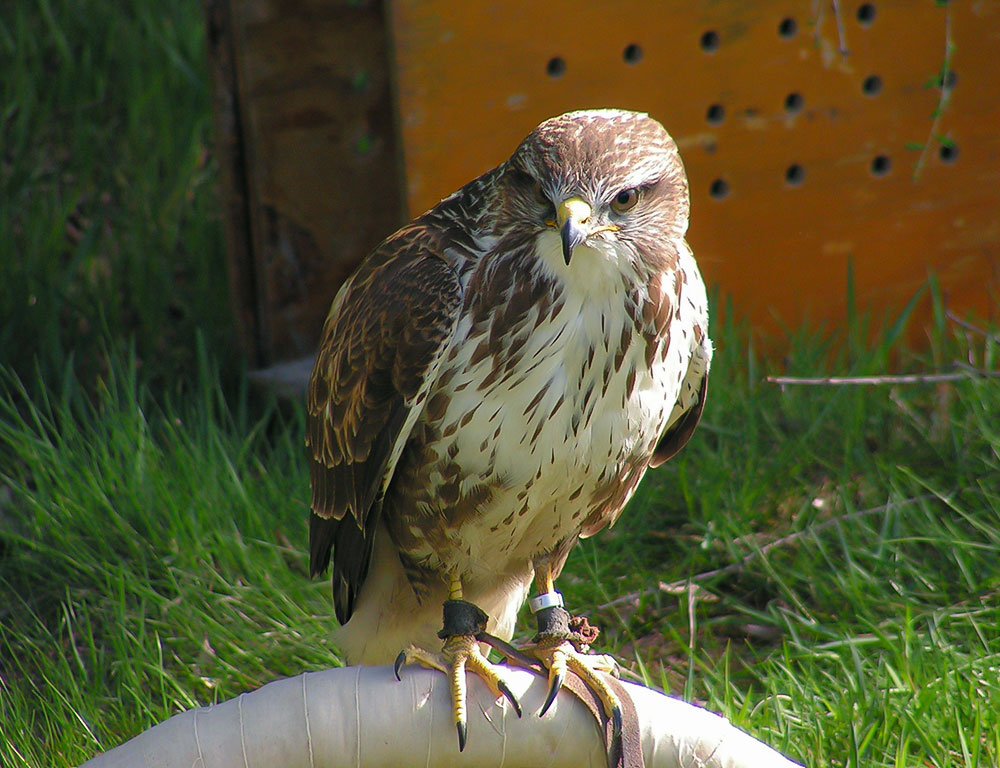
Buteos, an intriguing genus of birds, boast a robust body and wide-ranging wings. These medium to large raptors are known as “buzzards” in the Old World.
Yet, it’s interesting to note that in the New World they’re commonly referred to as “hawks”. The terms can be ambiguous so sometimes you’ll hear them simply called buteos.
Take for example the Peregrine Fund. They’ve made it their practice to use ‘buteo’ instead of buzzard or hawk when referring to these impressive birds. This usage helps eliminate confusion and ensures communication clarity when discussing these magnificent creatures.
Diversity is another hallmark of the buteo genus. With species found all over the globe, these birds have adapted to a multitude of habitats and climates. Each species is unique with its own set of characteristics and behaviors adding further complexity to this fascinating group.
One common feature among all buteos is their broad wings. This physical trait allows them to soar high above open areas in search of prey with minimal effort. It’s not uncommon for hikers and bird watchers alike to spot a buteo circling overhead on warm sunny days.
The world of buteos offers much for both amateur bird watchers and seasoned ornithologists alike. Their widespread distribution means there’s always something new to learn about this fascinating genus.
Conclusion
Pennsylvania’s diverse landscape is home to a variety of large bird species, contributing to its rich wildlife. Notable birds include the Bald Eagle, Great Blue Heron, Northern Goshawk and Barred Owl among others.
These are just 12 examples from hundreds that inhabit the region. Birdwatching in Pennsylvania offers constant opportunities for new discoveries.
It’s essential to respect these creatures and their habitats as they play a crucial role in the state’s ecosystem. This guide aims to provide insights into these feathered residents and encourages keeping binoculars handy for unexpected sightings.